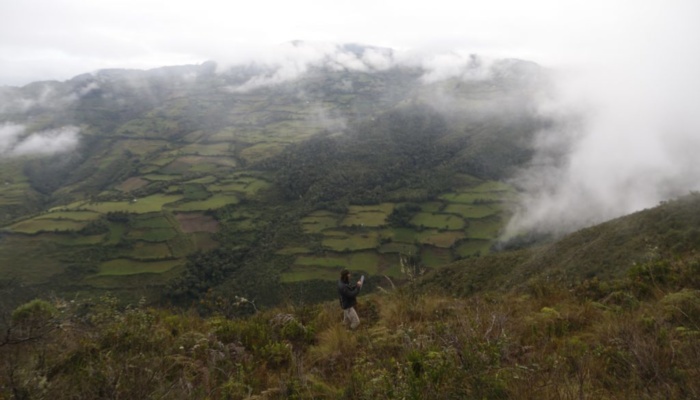Field Stories from the Andes of Peru
Field Stories from the Andes of Peru
By Ian Ausprey
You’ve probably encountered the term “Big Data” a lot in the news. From Google to Facebook to scientists sequencing genomes, the digital revolution has allowed an unparalleled ability to explore the world across vast scales of space and time. Yet, behind the sophisticated advances of supercomputers, machine learning, and artificial intelligence lies an essential core ingredient: data. Here at the Biodiversity Institute researchers investigate biological and environmental datasets that inform the origin, maintenance, and conservation of global biodiversity. The development of such datasets requires an immense amount of effort from thousands of expert observers around the world. I’d like to share a few stories from my own experiences in the field to help you understand what it takes to collect the data that fuel biodiversity research.
My dissertation work is based in the Andes of northern Peru and examines how habitat loss and fragmentation due to agriculture affects cloud forest bird communities. Cloud forests are beautiful places, rich with mist, moss, and exquisite orchids, bromeliads, and other epiphytes.

The core of my work involved surveying bird communities in forested and agricultural landscapes. Much of this work involved identifying some 300 species of birds by their songs, which is only possible in the first few hours after dawn when bird song peaks. Over the course of 12 months in 2016 and 2017 I spent most mornings waking well before dawn to hike up to survey routes in remote cloud forests, remnant forest patches, and agricultural landscapes.

Many species of birds in the tropics sing infrequently and are hard to detect by sound. So, we also use mist nets to quickly capture birds, mark them with a numeric leg band, and take various measurements before releasing them back into their environment.



Sometimes our work requires hiking to remote areas and camping in rustic huts.



Most of the time we work out of rural “campesino” communities. There we live with local families, learning about their lives, cultures, food, and agricultural practices.




Integration with local communities has inspired opportunities to share our work with school groups through workshops and birding excursions.



